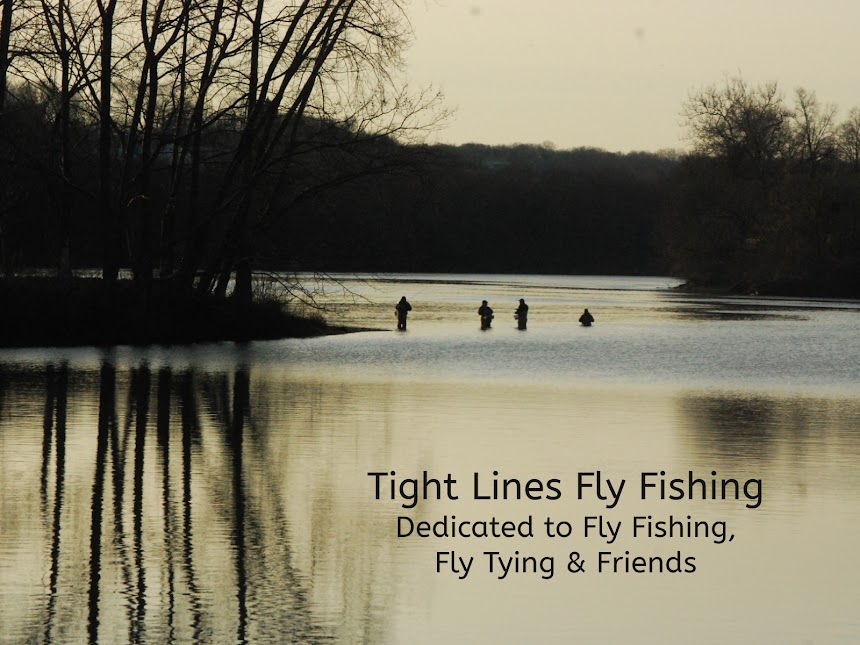Paul's Housatonic Crayfish
Hook: Size #4 3X long Streamer hook. Can also be
tied in larger sizes.
Tying
thread: Brown Uni-thread or 6/0.
Weight: 6-10 wraps of .25 lead.
Claws: 3-4 strands of Pearl Krystal
Flash over which are 2 Brown Matched Marabou Feathers.
Antennae: 2 Black Pieces of Krystal Flash.
Thorax/Carapace: Medium Tan/Brown or Coffee Chenille, topped with 6-8
pieces of Peacock Herl.
Legs: Brown Saddle Hackle, palmered around the
Thorax/Carapace.
Abdomen/Body: Medium Brown Chenille.
Tail: Brown Swiss Straw tied behind and on top of the
eye and fanned open. Coated with ‘Hard as Nails’.
I developed this fly close to 40 years ago. It was all due to my lack of expertise fishing for trout and learning to tie flies. I struggled during that spring on the Hous, trying to learn the hatches and patterns that would land trout. By the time the summer heat arrived I had become somewhat proficient with my casting and was really getting into catching Smallmouth Bass. At that time fishing for ‘smallies’ was not popular and targeted by only a few fly fishers. After catching a couple bass with Crayfish hanging out of their mouths, I just had to find a Crayfish pattern to fish on the Housatonic. What also provoked me to find a Crayfish pattern is that the crayfish population on the river is monstrous. It’s also one of the primary food sources of ‘smallies’.
Back then, I tried a few crayfish flies, some designed by some famous fly tyers. They worked but I noticed that flies with more movement were the most productive. On almost all of those flies the claws were stationary, composed of deer hair or cutout pieces of ‘raw hide’. I decided to design my own crayfish, using marabou for the claws. My catch rate improved dramatically.
One final piece of advice with this fly, crayfish swim fast, with a short darting motion, tail first. Claws are extended in line with each other. So, you have to get this fly down deep. Weighting it with lead is strongly recommended. You may also need a split shot above the fly. When fishing this fly, short fast strips, then stopping, can result in hook ups. Also, there is a technique called the ‘Crayfish Hop’. Drift or Euro nymph your fly, then with your rod tip, jerk it about 12”. It’s what most resembles how a crayfish swims.
To tie this fly, begin by placing your hook in the vice. Take a few securing wraps of thread behind your eye and cut off the tag end. You’re going to tie your tail first. To prepare it, take a 5-6” length of Swiss Straw and fold the first inch over your bodkin. Fold it over the bodkin 2 more times. Pinch the 3 folds together to create a fan approximately the width of your hook gap. Tie it on top of the hook shank directly behind the eye with securing wraps. It should extend 3 hook eye lengths from the tie in point. When you tighten down on your wraps, the folds should fan out for your tail. Adjust the tail/Swiss Straw if needed until your satisfied with its final shape. Coat the back and front of it with ‘Hard as Nails’.
Next, affix your lead weight to the hook shank. Take 7-8 wraps at the bend end part of the hook shank, right where the Thorax/Carapace is going to be located. Bind it down with thread wraps. Next, off the bend of the hook, tie in 3-4 strands of Pealescent Krystal Flash. They should be approximately a hook gap in length. On top of that tie in 2 Brown Matched Marabou Feathers. The claws should be a hook shank in length off the bend of the fly. Top that with 2 Black Pieces of Krystal Flash for the Antennae. They should be 1 ½ times the length of the Marabou Claws.
At the tie in point behind the Claws/Antennae, tie in 6-8 strands of thicker Peacock Herl. Without advancing your thread, tie in the Brown Saddle Hackle by the butt end. Trim off the excess. Next, tie in your Medium Brown Chenille. It should be at least 6-7” in length. Take 3-4 wraps forward with your Chenille. Wrap back over it a couple times to create a bulbous Thorax/Carapace. Tie it off but do not cut off the butt end. Now palmer your Saddle Hackle around the Thorax/Carapace. 3-4 wraps should do it, brushing the hackle fibers open with your free hand. Tie it off and cut off the butt end. Next, take all the Peacock Herl and pull it towards the tail. Tie it off with your thread, then cut off the butt ends. You should still have a segment of Chenille hanging from your hook at the back of the Thorax. Advance you thread to the tail, then take touching wraps with your remaining Chenille to create the abdomen. Tie it off at the tail. Cut off the butt end and whip finish.
If you have any questions about this fly or would like to submit a Fly of The Month I can be reached at pdinice@frontier.com .



No comments:
Post a Comment